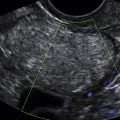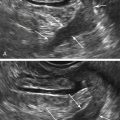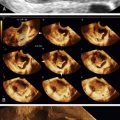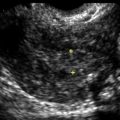Schwannoma
Synonyms/Description
Schwann cell tumor
Etiology
Schwannomas are peripheral nerve sheath tumors composed of Schwann cells, which produce myelin that covers and insulates nerve fibers. Schwannomas can occur in isolation or may be associated with neurofibromatosis type I (previously known as von Recklinghausen’s disease).
Nerve sheath tumors can occur anywhere along the peripheral nervous system, with only 3% of Schwannomas arising in the retroperitoneum and pelvis. Retroperitoneal Schwannomas tend to be very large when detected because they are usually asymptomatic or associated with nonspecific symptoms, thus delaying diagnosis. Malignant peripheral nerve sheath tumors are even more rare and are classified as sarcomas.
Ultrasound Findings
Schwannomas are typically solid, hypoechoic, and well encapsulated, sometimes with cystic areas and calcifications. They can grow large, up to 20 cm in diameter, and tend to be vascular, often with central hemorrhage and infarction. The appearance is nonspecific, making the correct diagnosis by imaging difficult. The large masses often displace normal retroperitoneal structures such as the kidney and ureter without invading them.
Differential Diagnosis
The differential diagnosis includes any solid or complex vascular mass that is large, posterior (retroperitoneal), and displacing other organs. This includes sarcomas, lymphomas, neurofibromas, metastatic disease, renal cell carcinoma, and other retroperitoneal tumors. When present in the pelvic area (presacral), they may be confused with degenerating fibroids, although the lack of a uterine stalk should argue against a fibroid.
Clinical Aspects and Recommendations
Schwannomas are typically benign and only treated when symptomatic. Malignant Schwannomas are classified as sarcomas and typically are very aggressive. These are managed by multidisciplinary teams, which include surgeons, oncologists, and other specialists.








